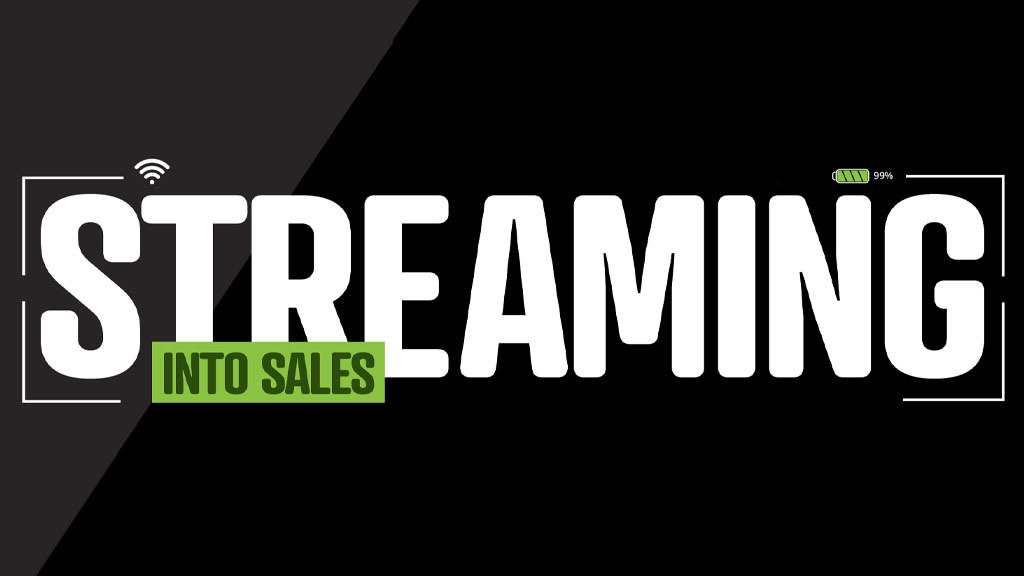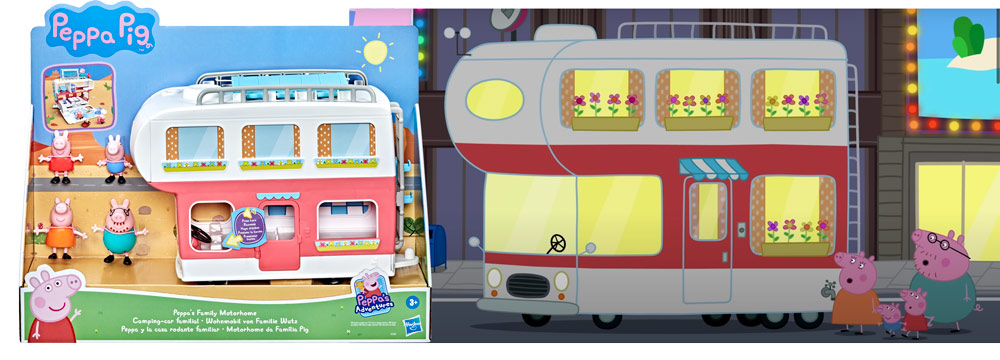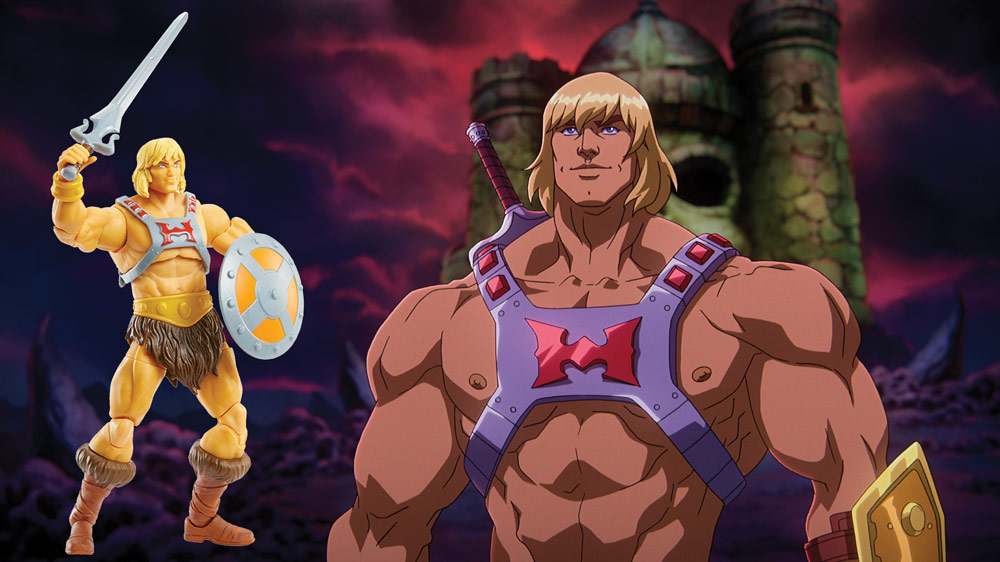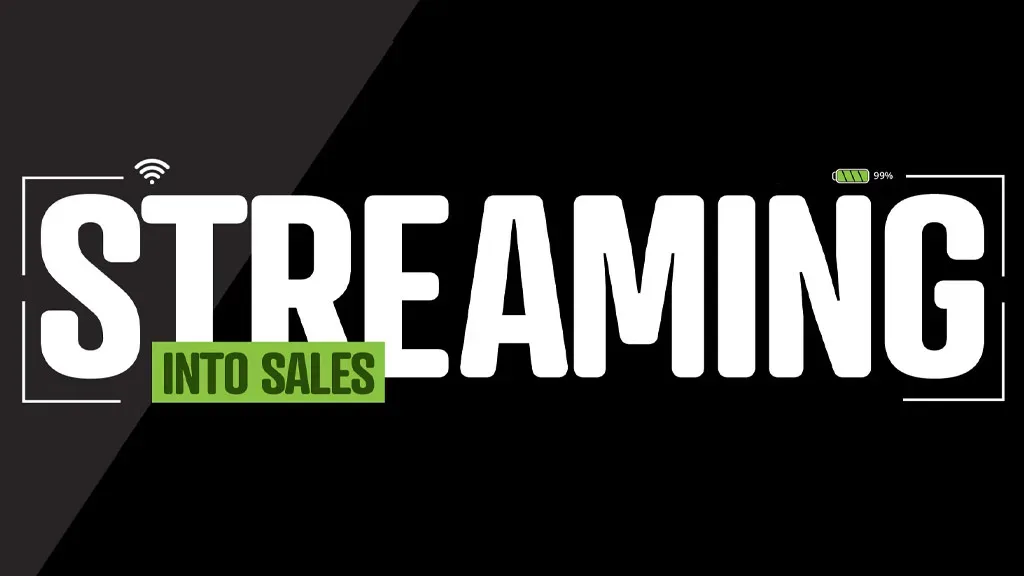
It’s been nearly 15 years since Netflix first started to offer its subscribers a library of online video content for a flat monthly fee, introducing a new way to watch TV and movies that would ultimately eclipse — or more accurately, obliterate — its existing DVD-by-mail rental service. Today, content streaming is still a hot topic. From the ever-increasing number of platforms vying for viewers’ eyeballs (and dollars) to a tidal wave of thorny questions about the impact of day-and-date movie releases, this now-integral part of our entertainment consumption is complex, multifaceted, and still evolving.
One of the many facets is the impact that streaming platforms have on consumer products and, specifically, on toys. It is a fact that streaming viewership among kids is continuing to grow, as weekly linear TV viewership declines.
According to data from The Insights Family, normal weekly TV viewership in August declined for all kids ages 3-12 when compared to the same period last year. The decline was steepest for kids ages 6-9, which had a 29% decrease. While many factors, including the COVID-19 pandemic, may have influenced this drop, all age groups also saw an increase in Netflix weekly viewership year-over-year: +3% for ages 3-5, +14% for ages 6-9, and +18% for ages 10-12.
And along with that increased viewing comes increased spending. The Insights Family also tracked kids’ likelihood to make licensed toy purchases compared to their viewing habits: Across all age groups (3-5, 6-9, and 10-12), Disney+ viewers were more likely than average to make both TV and movie-inspired purchases. The most notable influence was for the oldest age group, which was 21% more likely to make movie purchases and 27% more likely to make TV purchases than average — perhaps a testament to the strong consumer products programs surrounding Star Wars and Marvel content, which is available to watch on Disney+. The Insights Family also tracked this data for Netflix viewers and found an increased likelihood for both movie and TV purchases in ages 3-5 and 6-9. For ages 10-12, Netflix viewers were 13% more likely to make TV purchases, but 3% less likely to make movie purchases.

Anecdotally, Rebecca Harvey, executive vice president of global brand management for family brands at Hasbro’s eOne, acknowledges the importance of streaming to expand existing intellectual property (IP). eOne’s preschool series PJ Masks and Peppa Pig both started as traditional TV launches but have since found streaming homes on platforms in the U.S., including Disney+ (PJ Masks), Paramount+ (Peppa Pig), and Netflix (PJ Masks). According to Harvey, Hasbro has really moved into the streaming space over the past few years, especially as the COVID-19 pandemic expedited an existing shift to digital consumption.
One example Harvey gives for the impact of streaming was the jump in brand affinity, exposure, and revenue when Peppa Pig launched across a variety of streaming platforms in China. In fact, Peppa Pig was trending on streaming platforms in multiple territories this summer. “I’ve no doubt this will create deeper engagement, affinity, and more sales,” Harvey says. “New kids will enter the brand, and when there is a need for a magazine, book, or toy, maybe for their own holiday staycations, Peppa will be top of mind.”
However, she emphasizes that just because that is the case for Peppa, it doesn’t mean every brand works the same way. She says the most important factor is continuing to provide fresh content and delivering it to families through a variety of mediums. For Hasbro and eOne, this includes everything from toys and music videos to digital gaming and eventized content.
“What drives strong sales is a content mix that enables kids and parents to move from one element of the brand to another, to another, and then another seamlessly — endlessly attaching fans to an IP that consistently delivers on a trusted brand promise,” she says.

Mattel, meanwhile, delved into content creation for streaming platforms in recent years, most notably with this summer’s debut of Masters of the Universe: Revelation on Netflix, which was the platform’s No. 1 kid’s show in the U.S. during its opening weekend. According to Executive Vice President and Chief Commercial Officer Steve Totzke, the company has already seen a positive impact on toy sales from this launch. Mattel will continue rolling out Masters of the Universe content with the series He-Man and the Masters of the Universe, which gives the brand a new visual style for a younger audience. Mattel also launched a new Barbie Netflix special, Barbie: Big City Big Dreams, with accompanying product on Sept. 1.
Totzke also says that streaming platforms have been an important factor for many of Mattel’s long-time licensing partners, like Universal Studios’ Jurassic World franchise. The Jurassic Park and Jurassic World movies have spent time on multiple major streaming services, while the animated series Jurassic World: Camp Cretaceous continues to bring new brand content to Netflix.
“One of Mattel’s objectives with our own IP and our partner properties is to move from launch event to evergreen, and these streaming platforms are helping facilitate that goal in a more meaningful way,” Totzke says.
Bolstering — or in some cases, reviving — classic brands is an additional point at which streaming platforms and consumer products can intersect. For example, Walt Disney Studios’ entire catalog of classic animated movies left “The Vault” and became available to U.S. consumers for the first time ever with the debut of Disney+ in November 2019. This year, Disney launched the Ultimate Princess Celebration, a toy and consumer-products-heavy celebration of its princess characters, who are undoubtedly more accessible to kids than ever before.
ViacomCBS, and specifically its Nickelodeon team, have seen the impact of streaming on legacy brands, too. According to Dion Vlachos, executive vice president of hardlines and retail for ViacomCBS Consumer Products, older shows that have recently landed on major streaming services have seen an increased demand for products, including Avatar the Last Airbender, SpongeBob SquarePants, iCarly, and Blue’s Clues.

“We are seeing a correlation of digitally native fans who are enjoying their favorite shows in groups of episodes and then searching for product online to celebrate their fandom,” Vlachos says.
However, finding the right way to predict and prepare for consumer demand from streaming content can be a major challenge. Totzke also names the Disney+ series The Mandalorian as an example of the impact streaming content can have on toys. Mattel’s The Child plush toy was the largest and fastest-selling presale in company history, and Totzke says Mattel is currently expanding its range to reflect consumer interest in the show and its characters. However, at the time of The Mandalorian’s initial debut in 2019, the secrecy surrounding the fan-favorite character The Child (now known as Grogu) meant that toys and other consumer products featuring the character were not available immediately after the show debuted, despite an incredibly sudden and strong consumer demand.
In fact, Vlachos says that ViacomCBS is currently working on compressing its product development timelines to meet the demand of popular streaming content, including offering merchandise on demand and strategically planning long-lead categories to be able to release products shortly after shows arrive on streaming platforms.
Matching timelines with demand isn’t the only challenge when it comes to developing toys for streaming content, when compared to linear television. As Harvey explains, when content all drops at once, it doesn’t give time for product demand to build at a steady pace. “Once the audience is finished with the content, they will simply move on before the next season is ready,” she says. “We have seen new IP launch with successful consumer products strategies attached to a streaming-first strategy, but it’s still unproven as a whole.”
The exact impact of streaming platforms on the sales and development of toys is still an evolving reality. As ViacomCBS evaluates its product development timing, Hasbro is testing and researching exactly how relaunching older content on streaming platforms impacts consumer product success. Its in-house research team is buying consumption data, and the brand and marketing teams are tracking competition alongside ongoing brand health studies and audience research.
Throughout this learning process — and despite the changes in how kids consume media — Harvey says that the priority has to stay on creating great content. “What’s critical right now, when viewers have more choice than ever before, and will come into a property and leave quicker than before, is strong IP,” she says. “For us, whether we are creating toys or creating content or toys attached to content, the driver is always IP first.”
And now, as seen in a wide variety of shows and movies that are in development, many toy companies are utilizing their original toy IP to inspire entertainment content — much of which is sure to find its way to streaming platforms, adding yet another layer of complexity to the streaming-meets-toys landscape. In Harvey’s opinion, it’s an exciting development, but one that should remind toy companies that the toys themselves are key.
“I do believe this will help to increase fandom and affinity,” she says. “But let’s not forget that toys are just as important growing up as the entertainment we watch. Bridging the two together is powerful.”
This article was originally published in the October edition of the Toy Book. Click here to read the full issue!

